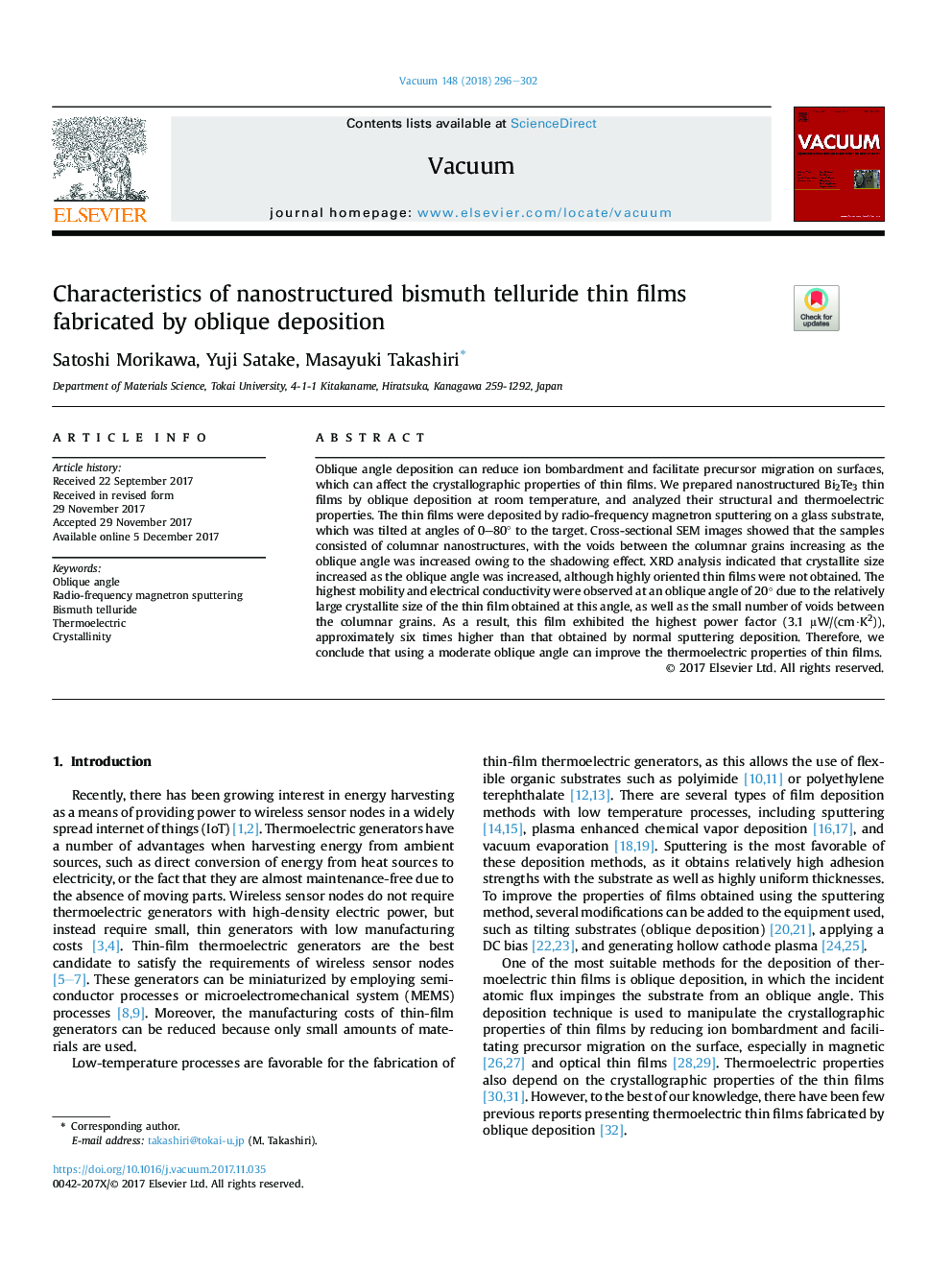| Article ID | Journal | Published Year | Pages | File Type |
|---|---|---|---|---|
| 8044700 | Vacuum | 2018 | 7 Pages |
Abstract
Oblique angle deposition can reduce ion bombardment and facilitate precursor migration on surfaces, which can affect the crystallographic properties of thin films. We prepared nanostructured Bi2Te3 thin films by oblique deposition at room temperature, and analyzed their structural and thermoelectric properties. The thin films were deposited by radio-frequency magnetron sputtering on a glass substrate, which was tilted at angles of 0-80° to the target. Cross-sectional SEM images showed that the samples consisted of columnar nanostructures, with the voids between the columnar grains increasing as the oblique angle was increased owing to the shadowing effect. XRD analysis indicated that crystallite size increased as the oblique angle was increased, although highly oriented thin films were not obtained. The highest mobility and electrical conductivity were observed at an oblique angle of 20° due to the relatively large crystallite size of the thin film obtained at this angle, as well as the small number of voids between the columnar grains. As a result, this film exhibited the highest power factor (3.1 μW/(cm·K2)), approximately six times higher than that obtained by normal sputtering deposition. Therefore, we conclude that using a moderate oblique angle can improve the thermoelectric properties of thin films.
Keywords
Related Topics
Physical Sciences and Engineering
Materials Science
Surfaces, Coatings and Films
Authors
Satoshi Morikawa, Yuji Satake, Masayuki Takashiri,
